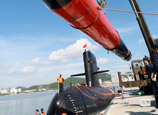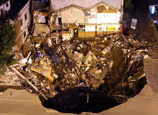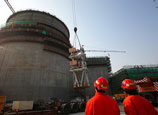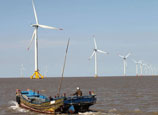
 |
| Hysan Place has been certified LEED Platinum for multistory voids, which improve airflow along the streets below.(China Daily) |
In Hong Kong, necessity often means building a branch, tunnel, bridge or rooftop.
"Hong Kong has no center or grid," Solomon says.
"Instead, it's a rich network of private and publicly owned places."
Consequently, lines of ownership have blurred over the years and city planning has become a community effort, making collaboration and foresight imperative.
Solomon curated the exhibition Hong Kong at 15: Redefining the Public Realm that ended a six-week run at the Center for Architecture in New York on Jan 23.
The educator also conducted a discussion with Hong Kong-based architectural photographer Chan Yiu-hung (who also goes by the name Ah Hung) on examples of modern Hong Kong structures built through partnerships between US and local architects to illustrate the value of professional and cultural exchanges.
As Hong Kong works to define its postcolonial identity, factors to consider include heritage preservation, environmental conservation and waterfront development.
Anita Chan, director of the Hong Kong Economic and Trade Office in New York, says the city must create sustainable designs that will reduce its urban heat-island effect, improve air quality and provide good storm-water management systems while retaining its visual allure.
Solomon believes New York shares many of these city-planning considerations.
Further cross-cultural cooperation between these two coastal cities, he adds, would provide mutual benefits in alleviating both cities' urban stress.
One example of such mutual aid includes the new Asia Society Hong Kong Center, completed in 2011.
"The Asia Society building is very important in Hong Kong," Solomon says.
"It is a model for the adaptive reuse of old buildings and a guide for future sustainable development."
New York company Tod Williams Billie Tsien Architects reclaimed a colonial-era British army explosives magazine - an artillery storehouse on one of Hong Kong's steep hillsides - to build the Asia Society's new home.
Like other projects the company has completed, including the David Rubenstein Atrium at New York's Lincoln Center (winner of a LEED award, an industry standard for energy-efficient design), the Asia Society building melds Hong Kong's natural jungle with the concrete variety.
According to Ah Hung, Hong Kong structures that represent a symbiosis between the city and nature, or the traditional and the contemporary, are rare. This is evident in the widespread disappearance of old Chinese-style architecture.
Hysan Place, another New York-Hong Kong collaboration, didn't include heritage preservation as a design principle but is considered one of Hong Kong's more sustainable modern buildings.
This skyscraper, certified LEED-Platinum, or Leadership in Energy and Environmental Design, includes sky gardens with views above neighboring rooftops and is punctured by multistory voids that improve airflow on the streets below.
"Developing new buildings in Hong Kong that incorporate aspects of both the urban and the natural is so important," Ah Hung says.
"I think this type of 50-50 nature-to-building ratio should always be used."
Another contemporary concept in Hong Kong is the use of Victoria Harbor as a public recreational space.
"Hong Kong is working on new projects to rebuild its waterfront," Ah Hung says.
"Unfortunately, this is hard to do because the waterfront is already occupied by very important buildings."
Hong Kong's harbor has long been valued for its commercial importance.
"I grew up in Chicago where we have Lake Michigan and so many parks established for the sole purpose of recreation," Solomon says.
"The first time I visited Hong Kong, I was aghast at the lack of public recreational space on Victoria Harbor."
He attributed this difference to Hong Kong's background as first a community of fishing villages and later as a hub for shipping and trade.
The harbor has always been about business, while living on the water was traditionally considered dirty.
Now, Hong Kong's waterfront is the new frontier.
Proposed projects include the relatively simple, such as a Ferris wheel, and the ambitious, like the 40-hectare West Kowloon Cultural District. That area will integrate arts and culture in world-class facilities.
However, when thinking about extreme weather events back home like Hurricane Sandy, Solomon wonders if waterfront development in typhoon-prone Hong Kong is responsible or even feasible.
Yet efforts in cities, including Sydney, Vancouver and Barcelona, are proof that responsible waterfront development can be achieved, he points out.
As for Solomon and Ah Hung, their shared goal is to generate cross-cultural dialogue among architects and the wider community to realize the best possible designs for their cities.

















 Buildings collapse after subsidence in S China
Buildings collapse after subsidence in S China


![]()
